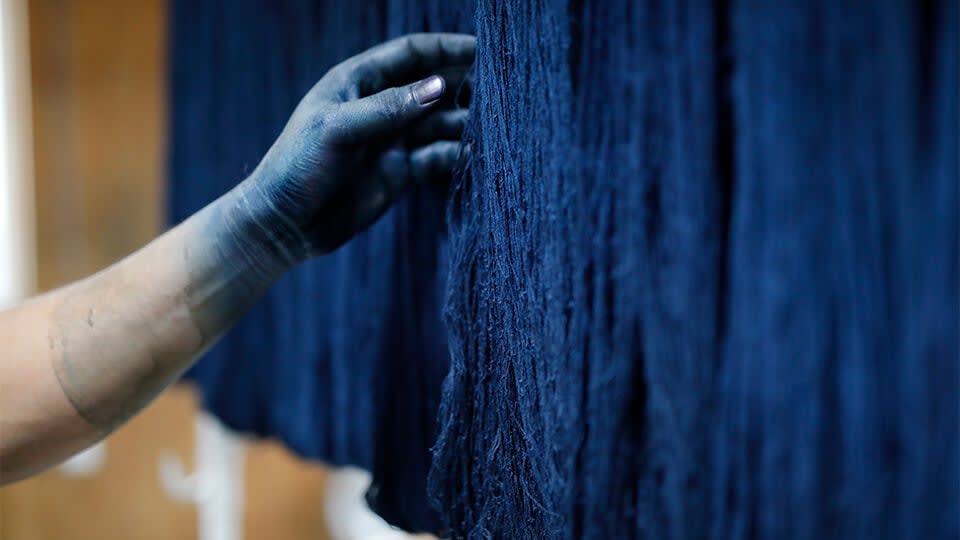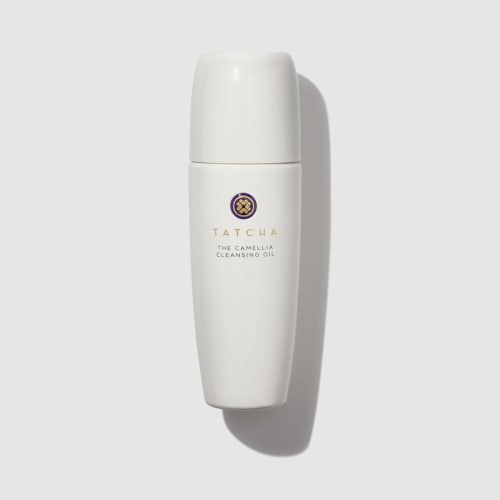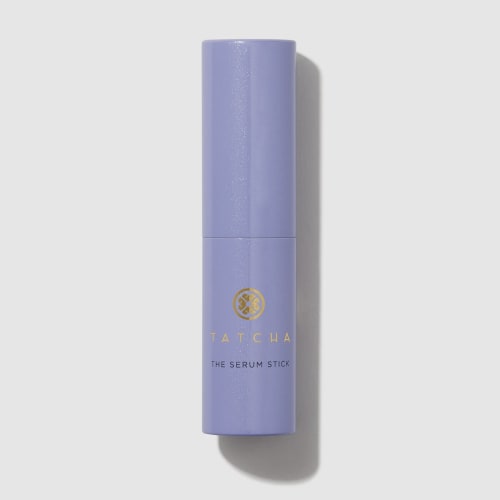Sensitive skin affects many different faces in different ways. But the one thing dermatologists, researchers, and other experts can agree on: These natural ingredients can help keep skin under control.

For some, skin is a predictable thing. Like the sunshine in Southern California—most days are clear. For others, skin can be surprisingly volatile, like the weather on Jupiter. The slightest tweak in circumstances can unleash a fire tornado across the land. There is a simple term for this quality: Sensitive skin.
Some people are free to slather on new creams or test out new skin technologies without worry. Those with sensitive skin may not. And this group is larger than you might think. A 2019 report that looked at about 20 surveys, conducted all over the world between 2001 and 2017, found that 60-70% of women and about 50-60% of men reported having sensitive skin. To have sensitive skin is to be constantly engaged in a feedback loop with your skin that can begin to feel tedious: Will I regret using this hotel face wash? Can I wear this beautiful necklace my friend has just given me? Should I go outside today?
Generally, sensitivity is characterized by frequent reactions to things like new beauty products or materials being applied to the skin. In 2017, a team of researchers published a definition of sensitive skin in a peer-reviewed dermatology journal: “A syndrome defined by the occurrence of unpleasant sensations (stinging, burning, pain, pruritus, and tingling sensations) in response to stimuli that normally should not provoke such sensations.” According to them, sensitive skin can happen anywhere, but refers especially to the skin on the face—often the target of our skin care attentions. Fortunately, there are plenty of helpful formulas and ingredients for sensitive skin types.
Do I have sensitive skin?
If you have to ask, the answer might be no. Sensitive skin is hard to diagnose on its own, which is why you should consult your dermatologist if you have questions about your skin type. But there are a few general questions you might ask yourself if you are wondering about your skin’s sensitivity.
Does my skin react to things? It happens to everybody: Once in a while, we try a product our skin doesn’t love. But if this feels like it happens to you more often than not, your skin might be highly reactive—a common trait of sensitive skin.
Am I usually red, or dry, or both? Maybe you wake up every morning with clear, dewy skin that goes bright red as soon as you wash your face, or maybe you notice dryness to be a recurring theme to your skin. In either case, it could be a hint that your skin needs something it’s lacking—or needs a break from something you’re using.
Do I get frequent rashes or breakouts? Inflammation beneath the skin’s surface that expresses itself in acne, rashes, or both could indicate a general sensitivity.
Do I burn more than I tan? It’s not only reactivity to products that categorizes sensitive skin, but also reactivity to the environment—sun, water, and the air around us.
Why is my skin so sensitive?
It’s important to acknowledge that, unlike acne or eczema, “sensitive skin” is not a clinical diagnosis. Instead, as a dermatologist explained to Self, it’s used to refer to skin that is generally reactive. There are a few reasons why someone’s skin might be more reactive than another’s.
Demographics and genetics. As revealed by many surveys of those with sensitive skin, certain factors, like the climate or population density of where you live, can affect the reactivity of your skin. (One article found that low temperature and humidity, as well as pollution, “favor the manifestation of sensitive skin.”) A 2020 study by Proctor and Gamble, conducted in partnership with 23andMe, also found associations between sensitive skin and certain genome expressions, prompting dermatologists to look at family lineages when treating sensitive skin.
Cosmetic overload. In many cases, skin can become sensitive due to product overuse. Dermatologists stress the difference between sensitive skin, which is an inherent quality—like oily, dry, or combination—and sensitized skin, which is skin that becomes sensitive due to a particular allergen or irritant. Always pay attention to the ingredients you use, and take immediate note if you notice a negative response in your skin.
What can I do for my sensitive skin?
Many ingredients for sensitive skin have been discovered that are gentle on all skin types—and provide other benefits, like antioxidant protection or barrier support. Read on to discover some of the best skincare ingredients for sensitive skin.
Algae. For centuries, the ocean plant has been used for everything from food to shelter. Recent applications in cosmetic chemistry have shown that many forms of algae have powerful anti-inflammatory benefits. (One headline touts the “genius” of algae when applied to sensitive skin.) Red algae from Okinawa is included in Tatcha’s proprietary Hadasei-3TM complex for its ability to gently encourage skin renewal.
Colloidal oatmeal. Made with a finely-milled meal from the Avena Sativa, or common oat, plant. Colloidal oatmeal is famously soothing—with recognition from the National Eczema Association—and its unique composition lends anti-inflammatory, antioxidant, antipruritic, and antifungal benefits.
Camellia oil. The oil derived from camellia flowers has more naturally occurring antioxidants than any other botanical oil, and its efficacy as a makeup remover has been a closely kept beauty secret among geisha for centuries; the featherweight tsubaki camellia oil rinses skin clean of makeup without stripping away moisture. This beauty ritual inspired The Camellia Cleansing Oil, which surrounds tsubaki with nourishing essential fatty acids.
Green tea leaf extract. Alternatively known as camellia sinensis and “liquid jade,” green tea contains a high amount of enzymes, amino acids, and phytochemicals like polyphenols. It also flushes toxins from the body, aids in the healing of scars and blemishes, and firms and tones the skin.
Hyaluronic acid. Also known as sodium hyaluronate, this substance is naturally found in the fluids surrounding cells and tissues. It’s a no-brainer skincare ingredient: Few other ingredients can attach and bind moisture as well as hyaluronic acid, which makes it ideal for formulas that promise a dewy finish.
Indigo. You may be aware of the indigo applied to dye fabric, but what about the indigo applied to soothe skin? Indigo contains indirubin, a deep-red dynamic compound that inhibits irritation-causing proteins in the body and promotes skin’s healing abilities by restoring and strengthening its barrier function. During Japan’s Edo period, noble Samurai wore a layer of indigo-dyed cotton beneath their armor to help heal injuries; in Japan, the color Indigo is often referred to as “Samurai Blue”. Today, it’s a key ingredient in Tatcha’s sensitive skin collection. The Indigo Cream, a velvety moisturizer formulated especially for reactive faces, pairs indigo with colloidal oatmeal, while The Indigo Cleansing Balm distills the ingredient into a makeup-melting cleanser—removing makeup and calming skin in a single step.
Loquat leaf. A medicinal plant known as “healing fans.” A popular beauty ingredient in Japan, it’s used in many at-home remedies for dry or irritated skin.
Rosehip oil. This pressed seed oil contains high levels of Vitamins C and A, which help to delay the effects of skin aging and assist with cell regeneration.
Squalane. Isolated from olives, this botanical lipid absorbs effortlessly and deeply into the skin to nourish and moisturize skin. It works especially well in Tatcha’s Serum Stick, which is formulated with 80% squalane, hyaluronic acid, and lemon balm to minimize dryness wherever applied. (Lemon balm, or kousui hakka, translates to “caring for others” in the Japanese language of flowers, and has been used for centuries to help calm inflammation.)
With a little ingredient know-how, sensitive skin is easy to surmount. For more advice based on your face, read our skin type guide over here.





